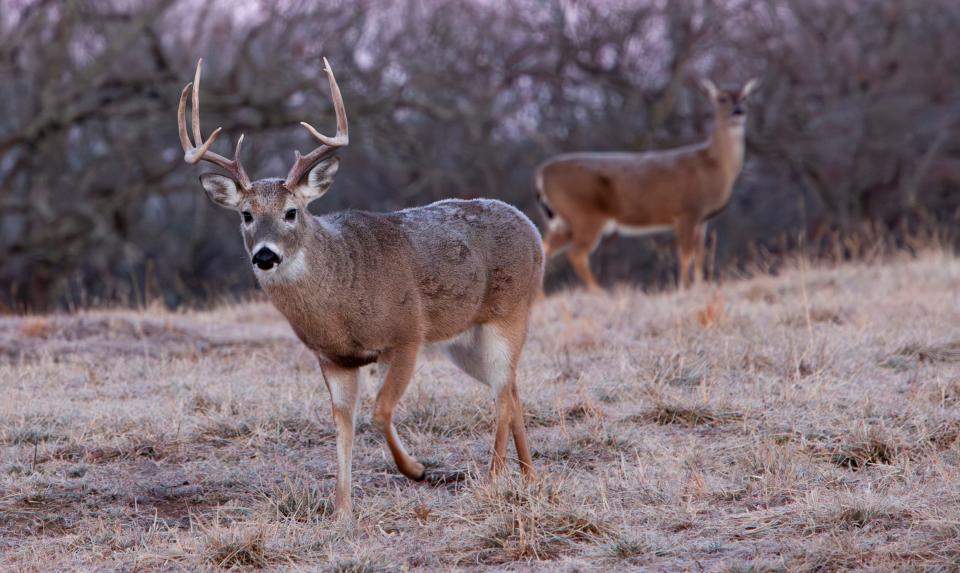CWD in Mississippi deer: Myths debunked and how hunters can help manage the disease
Chronic wasting disease was first discovered in Mississippi in February 2018 in Issaquena County and although it's been almost six years, myths and misinformation still circulate about the disease that is always fatal for white-tailed deer and other cervids.
According to the Mississippi Department of Wildlife, Fisheries and Parks, these myths and misinformation can hinder the effort to reduce prevalence and slow the spread of the disease. So, the agency recently began a campaign to help set the record straight and show the science associated with CWD management.
"There is a lot of misinformation out there," said William McKinley, MDWFP Deer Program coordinator. "There's just a lot out there from social media and word of mouth."
There are plenty of myths circulating, but McKinley pointed out and explained three that are at the top.

Myth No. 1: MDWFP will kill deer on properties where CWD is found
"There's misinformation out there about what happens if a positive is found," McKinley said. "People think we'll come out there and kill all their deer and that's wrong.
"We do not kill their deer. I hear it at every CWD presentation I give. It's a big one. There's 210 positives in 10 counties. We are not going in there and killing deer."
However, in areas known to have CWD, the department does issue what are commonly called 3-mile tags which allow hunters to harvest more deer than the annual bag limit within a 3 mile radius of a known case of CWD.
"We enable hunters and give them the opportunity to harvest deer right where CWD is," McKinley said. "The best way to slow CWD movement is by removing deer with CWD and the best place to find one is where a positive has been found.
"Of the tags used, about one third come back positive. That's managing the disease and we're using hunters to do that."
Myth No. 2: CWD has always been in Mississippi
"It's always been here," McKinley said. "That's another big one."
According to McKinley, science does not support that. He said in the early 2000s, Benton County was one of the most heavily sampled counties in the state while searching for CWD and no cases of the disease were found.
In sample year 2019, seven cases were found. The following year, 26 cases were found. And the numbers found each year keep rising. In sample year 2023, 44 cases were found in Benton County and it currently has the highest number of CWD cases in the state — 127.
"One in five bucks tested positive last year," McKinley said.
More: CWD reducing Mississippi's deer population. Here's how it could affect your deer season
Myth No. 3: CWD doesn't affect the deer herd
"It's not having an impact," McKinley said. "I hear a lot of that."
Yet again, science says otherwise. Two examples McKinley gave are located in the Southeast. Both states are conducting studies by outfitting deer with GPS collars. This allows biologists to track them and know when and where they die. At that point, the cause of death can be determined.
"West Virginia and Arkansas both have studies in CWD areas," McKinley said. "Both have a lot of collared deer. In Arkansas, CWD is killing about the same number as hunters in that area."
In West Virginia, the disease was discovered in 2005, is more entrenched and the impact is even more significant.
"In West Virginia, it's killing almost twice as many as hunters there," McKinley said. "It's now at 60% (prevalence)."
CWD in Mississippi: Here's where hunters can take deer for testing
How Mississippi hunters can help manage CWD
Gun season for deer opens Nov. 18 and tens of thousands of hunters will be afield. McKinley said hunters can help manage the disease by understanding it, having their deer tested, using the tools provided such as increased bag limits in certain areas and by harvesting extra deer, but not to exceed the legal bag limit.
"The overall message is if we're going to manage this disease, we need to find it early," McKinley said. "When we find it, we give hunters extra tools and guidance to help manage it.
"In other words, we need our hunters to help manage it. We need them to look at the facts and science of the disease. There's still a lot we don't know, but if we're going to manage it, we need hunters' help."
And, of course, CDC guidelines state that venison known to come from a deer that tested positive for CWD should never be eaten.
Mississippi deer season 2023-2024: Have your deer tested for CWD at these taxidermists
Do you have a story idea? Contact Brian Broom at 601-961-7225 or bbroom@gannett.com.
This article originally appeared on Mississippi Clarion Ledger: Deer hunting: Mississippi biologist sets record straight on CWD myths

